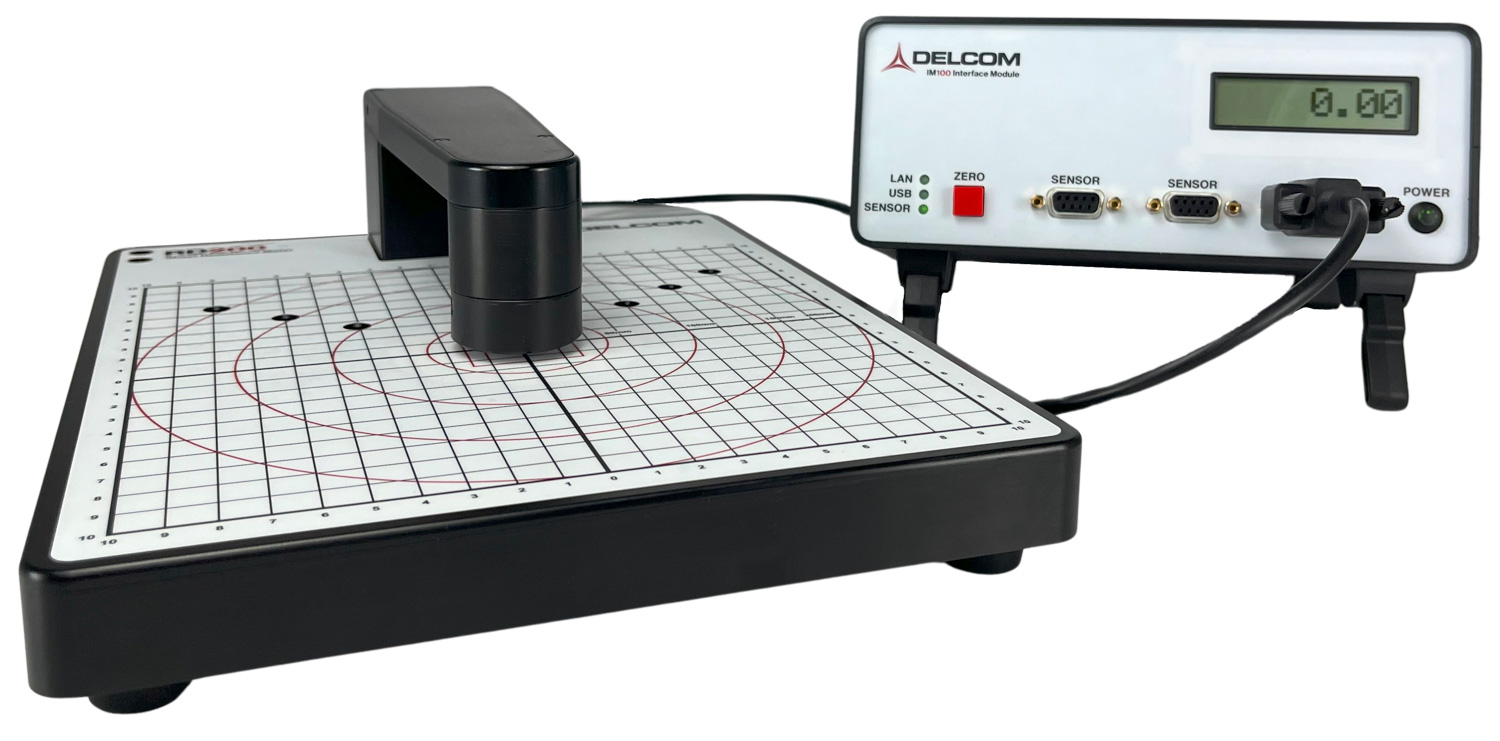Film Capacitors
What is Measured
Delcom sensors can measure the sheet resistance, sheet conductance, and thickness of foil or metalized capacitors.
Delcom can measure all electrode material to include:
- Aluminum and aluminums alloy
- Zinc and zinc alloys
Finally, Delcom sensors implementation is compatible with all dielectric types to include:
- Polypropylene (PP), aka: Treofan
- Polyester, Polyethylene terephthalate (PET), aka: Hostaphan, Mylar
- Polyethylene naphthalate (PEN), aka: Kaladex
- Polyphenylene sulfide (PPS), aka: Torelina
- Polytetrafluoroethylene (PTFE), aka: Teflon
- Polystyrene (PS), aka: Styroflex
- Polycarbonate (PC), aka: Makrofol
Figure 1: Metalized capacitor layers
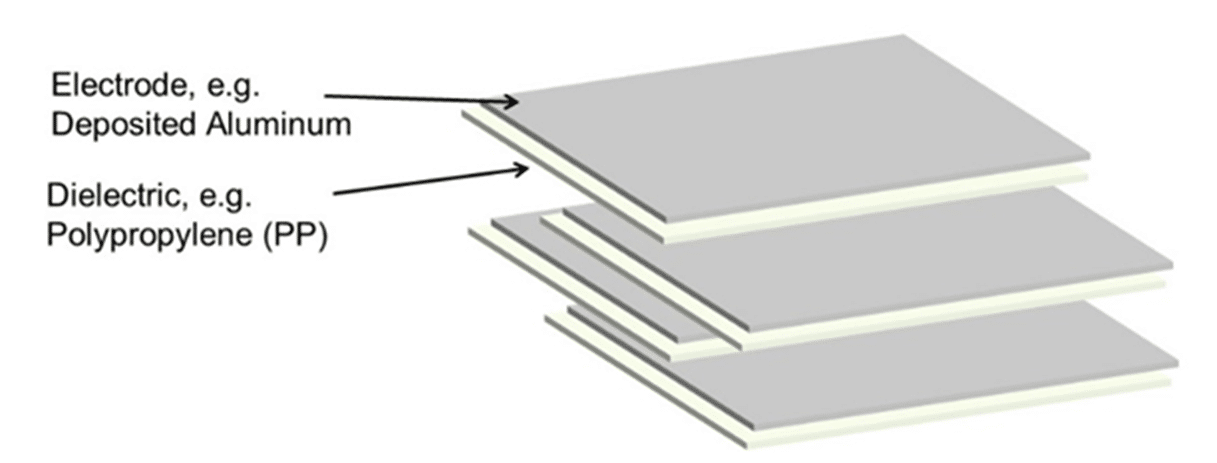
Figure 2: Foil capacitor layers
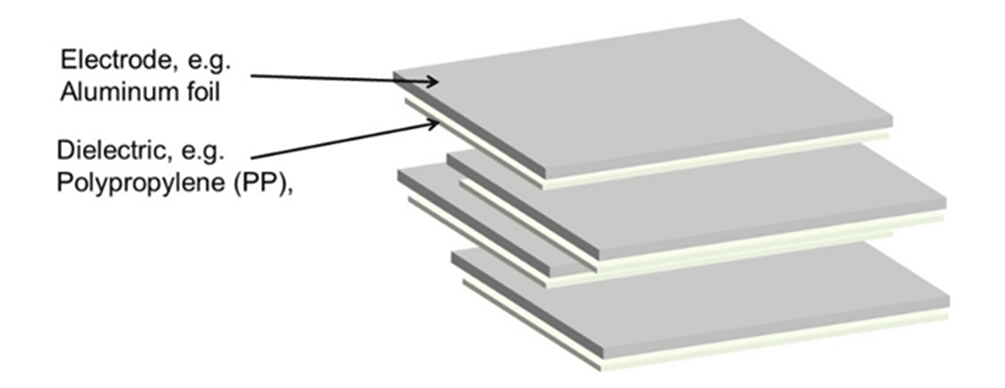
Why Measure with Delcom
Manufacturers of foils and metalized films for capacitors target certain thicknesses of the conductive layer in order to optimize specific performance characteristics. The thickness of a metalized layer or a foil is directly proportional to the sheet conductance of that material and inversely related to the sheet resistance of that conductive layer. Therefore, the best way to measure the thickness -and therefore ensure the electrical performance specifications of a product – is to use a sheet resistance meter.
Delcom sensors are superior to optical systems which are useful, but ultimately a bad choice because they measure the distance between the top and the bottom of a coated layer or foil which may or may not correlate to the amount of metal present – that is to say they are unable to account for density and other factors.
Four point probes rely on contact measurements which means they cannot be used inline and often destroy the samples they are testing. Delcom sensors offer the following advantages over four point probes:
- Is non-destructive
- Reads through insulating layers
- Measures moving material
- Provides nearly instantaneous readings
- Provides real-time process inspection
Not impeded by texture or patterns
Employment Strategies
Delcom eddy current sensors are ideal for the film capacitor industry. A Delcom sensor can be used in any of the following steps of the research through production continuum:
- During research and development to characterize conductive layers of different possible “recipes”.
- During the production of the electrode conductive layer.
- Metal is rolled until it is of the desired thickness – At each step, the Delcom sensor can be used inline to provide real time feedback on the thickness of the foil.
- Metal is evaporated and condenses on the dielectric layer or other material – the Delcom sensor can be deployed in vacuum between deposition are rewind to provide the manufacturer with real-time feedback on the deposition thickness
- When characterizing the product before being slitted the “mother roll” into thin strips of the required width according to the size of the capacitors being manufactured.
- After slitting but before being wound into a capacitor. If this step is chosen, special attention must be paid to ensure the strip of material to be measured is of sufficient width.
All delcom sensors come in one of two varieties: vacuum-ready and not vacuum-ready. Vacuum ready sensors are devoid of anodized materials, nickel coated hardware, and insulators that out-gas. In general, silver colored sensors are vacuum-ready while black anodyzed sensors are not.
For in situ roll to roll process, the best placement for the Delcom sensor is inside the chamber just after the coating of the conductive material.
Figure 3: Delcom sensor placement in situ
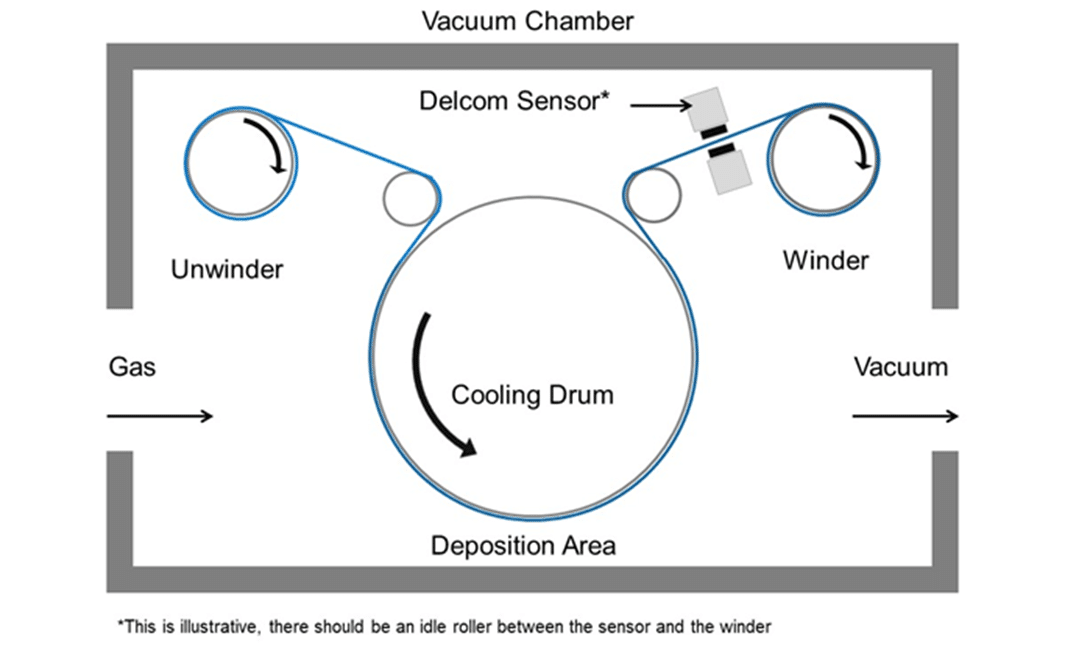
For non-flexible substrates coated in vacuum (e.g. glass), the Delcom sensors should usually be placed inside the chamber immediately after the deposition process.
Figure 3: In Situ monitoring of vacuum coated glass

Cross-Web & Downstream Monitoring
In general, Delcom sensor deployment strategies can include one or more of the following deployment tactics.
|
Deployment Strategy |
Image | Advantages |
|---|---|---|
| Single sensor single spot |  |
|
| Two sensors monitoring cross-web |  |
|
| Two sensors monitoring downstream |  |
|
| Multi-channel monitoring cross-web | 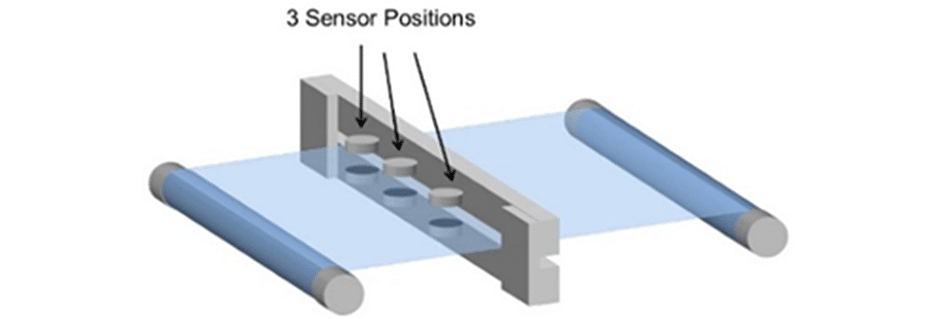 |
|
| Measure layers prior to lamination |  |
|
Recommended Sensors
Delcom recommends the following sensors based on the user’s material, stage of development, and application.
| Use case | Image | Recommended Sensor | Use case |
|---|---|---|---|
| Benchtop | 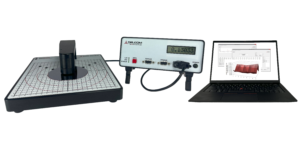 |
RD200 |
|
| Inline |  |
20J3 Hybrid |
|
| Inline |  |
20J3 Inline |
|
| Inline |  |
OEM |
|
| Inline | 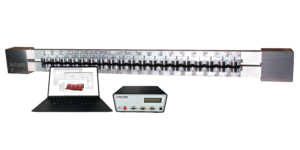 |
Multisensor |
|
Recommended Sensor Range
Delcom sensors measure sheet resistance. Delcom makes sensors in four ranges – each range able to measure a different range of sheet resistances. When considering which sensor is right for a particular application, the right range of instrument must be selected based on the target sheet resistance of the material.
Figure 4: Delcom’s sensor ranges:
| Range Name | Min Sheet Resistance in ohms/square |
Max Sheet Resistance in ohms/square |
|---|---|---|
| x10 | 5 | 100000 |
| x1 | 0.5 | 10000 |
| ÷10 | 0.05 | 1000 |
| ÷100 | 0.005 | 100 |
For wound thin film (or foil) capacitors target sheet resistance of the electrode layer can range from 0.01 – 1000 ohms per square with typical metallization thicknesses range from approximately 1-4 ohms per square. Given these materials and these target sheet resistance values, the thickness of the deposited material can be calculated.
Figure 5: Target thickness of deposited metalized films
| Material | ρ (Resistivity) in ohm-cm | Target sheet resistance in ohms/square | Target thickness in micrometers |
|---|---|---|---|
| Aluminum | 2.65 × 10-6 | 1 | 0.0265 |
| 4 | 0.0066 | ||
| Zinc | 5.9 × 10-6 | 1 | 0.0590 |
| 4 | 0.0148 |

 Veteran Owned
Veteran Owned Veteran Owned
Veteran Owned